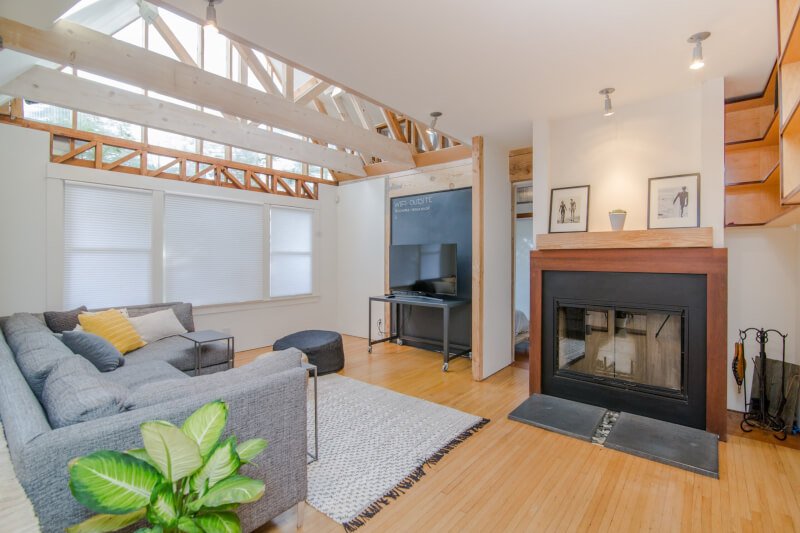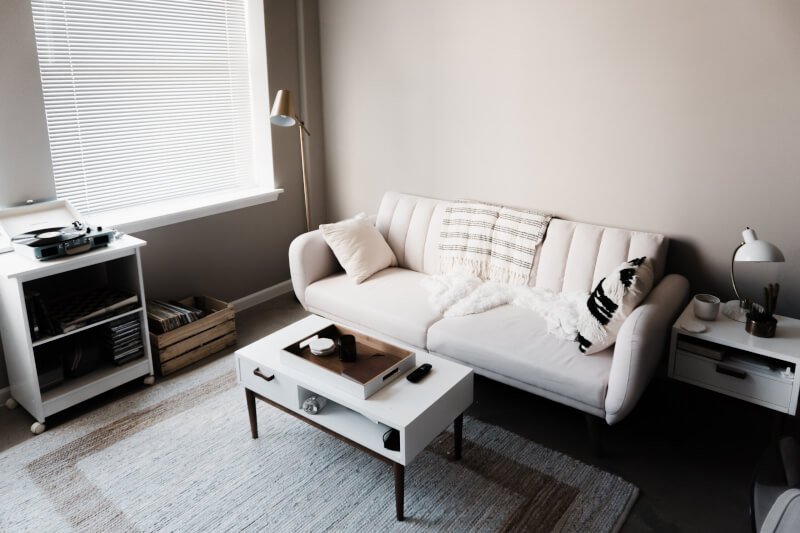Hey there! Looking to create the perfect workout space in the comfort of your own home? Well, look no further because we’ve got just the guide for you! Our DIY Home Gym Lighting and Ventilation Guide is here to help you transform any room into a well-lit and properly ventilated workout haven. Whether you’re a beginner or a seasoned fitness enthusiast, we’ve got all the tips and tricks you need to create the ideal atmosphere for your exercise routine. So grab your tools and get ready to elevate your home gym experience to a whole new level!

Lighting
1. Importance of proper lighting in a home gym
Having proper lighting in your home gym is essential for creating an energizing and motivating workout environment. Not only does good lighting help prevent accidents and injuries, but it also enhances visibility, allowing you to see your form and technique clearly. Adequate lighting can contribute to a positive mood and mindset during your workout sessions. Whether you have a dedicated room or a small corner for your fitness routine, investing in the right lighting fixtures can make a significant difference in your overall gym experience.
2. Types of lighting fixtures
When it comes to lighting fixtures for your home gym, you have several options to choose from. Ceiling-mounted fixtures such as recessed lights, track lighting, or pendant lights are popular choices for providing ambient lighting. These fixtures distribute light evenly throughout the space, eliminating shadows and ensuring a well-lit area for your workout. Wall sconces and wall-mounted fixtures can also be used to supplement the overhead lighting and add a decorative touch to your gym space. It is important to consider the size and layout of your gym area when selecting the appropriate lighting fixtures.
3. Choosing the right light bulbs
Selecting the right light bulbs is crucial for achieving the desired level and quality of lighting in your home gym. LED (light-emitting diode) bulbs are highly recommended for gym lighting due to their energy efficiency and durability. LED bulbs provide bright and clear illumination, similar to natural light, making them ideal for creating an inviting and well-lit workout space. Additionally, LED bulbs have a longer lifespan compared to traditional incandescent bulbs, which means less frequent bulb replacements and decreased maintenance.
4. Installing overhead lighting
Installing overhead lighting is a practical solution for ensuring overall illumination in your home gym. Recessed lighting, also known as pot lights, is a popular choice as it provides a sleek and modern appearance. To install recessed lights, consult a professional to ensure proper placement and spacing according to the size of your gym area. Alternatively, track lighting allows for adjustable and directional lighting, giving you the flexibility to focus light on specific exercise areas. Pendant lights can also be installed above specific workout stations, adding a touch of style to your gym space.
5. Utilizing natural light
Maximizing the use of natural light in your home gym can create a refreshing and invigorating atmosphere. If possible, position your gym space near windows or glass doors to allow natural light to flood in. Natural light not only provides excellent illumination but also offers the added benefit of Vitamin D, which is essential for maintaining healthy bones and supporting the immune system. However, it is important to consider the placement of mirrors and equipment to avoid any glare or reflection issues that may hinder your workout experience.
6. Task lighting for specific exercise areas
Task lighting plays a crucial role in illuminating specific exercise areas in your home gym. It provides focused lighting for activities such as weightlifting, yoga, or other types of exercises that require precision and concentration. Floor lamps or adjustable table lamps can be strategically placed near these exercise stations to ensure optimal lighting conditions. Task lighting not only enhances visibility for the specific activities but also adds an element of ambiance and personalization to your workout space.
7. Using mirrors to enhance lighting
Mirrors are not only useful for checking your form during workouts but also for enhancing the lighting in your home gym. Mirrors can reflect and spread light around the room, making the space appear brighter and more spacious. Consider installing mirrors on the walls opposite windows or natural light sources to maximize the reflection and diffusion of light. Additionally, strategically placing mirrors near artificial lighting fixtures can help bounce and amplify the light, creating a well-lit and visually appealing gym environment.
8. Installing dimmer switches
Adding dimmer switches to your gym lighting setup can offer versatility and flexibility in adjusting the lighting ambiance according to your mood and specific workout needs. Dimmer switches allow you to control the brightness of your lights, providing options for a more relaxed and calming atmosphere or a bright and energizing environment. This feature can be particularly beneficial during activities that require different levels of lighting, such as stretching, meditation, or high-intensity workouts. Consult an electrician to properly install dimmer switches to ensure safety and functionality.
9. Maintenance and safety tips for gym lighting
Regular maintenance of your gym lighting is essential for optimal performance and safety. Dust and clean light fixtures regularly to prevent any accumulation that may obstruct the light output. Check for loose connections, flickering bulbs, or damaged fixtures and replace or repair them promptly. It is also important to ensure that all electrical components are well-insulated and up to code to minimize the risk of electrical hazards. Remember to turn off the lights when not in use to conserve energy and extend the lifespan of the bulbs.
10. Energy-efficient lighting options
Choosing energy-efficient lighting options not only benefits the environment but also saves you money in the long run. LED bulbs are highly energy-efficient, consuming significantly less electricity compared to incandescent or fluorescent bulbs. They generate less heat, reducing the strain on your HVAC system and contributing to a more comfortable workout environment. Additionally, consider installing motion-sensor lights or timers to automatically turn off the lights when the gym space is unoccupied. This not only eliminates the need to manually switch off the lights but also ensures energy conservation.

Ventilation
1. Importance of ventilation in a home gym
Proper ventilation is crucial for maintaining a comfortable and healthy environment in your home gym. During intense workouts, your body generates heat and moisture, leading to increased humidity and decreased air quality. Good ventilation helps remove stale air, circulate fresh air, and control temperature and humidity levels. Not only does ventilation prevent the buildup of unpleasant odors and the growth of mold and mildew, but it also ensures proper oxygen flow and removes potentially harmful airborne particles. Adequate ventilation enhances your workout experience and promotes overall well-being.
2. Assessing the existing ventilation
Before implementing any ventilation solutions, it is important to assess the existing ventilation in your home gym. Evaluate the air circulation patterns, identifying any areas where air seems stagnant or lacks proper airflow. Check for any potential sources of ventilation issues, such as blocked vents, inadequate windows, or outdated air circulation systems. Understanding the current state of ventilation will help you determine the necessary improvements and select the most suitable ventilation options for your gym space.
3. Installing windows or vent fans
Installing windows or vent fans in your home gym can significantly improve air circulation and fresh air intake. Windows allow natural ventilation by providing an outlet for stale air to escape and enabling fresh air to enter. They also contribute to the overall aesthetics of the gym space, creating a more inviting and open environment. If windows are not feasible, consider installing vent fans to facilitate air exchange. Vent fans help remove humidity, heat, and odors by drawing in fresh air from outside and expelling stale air. Ensure that the vent fans are properly sized and positioned for optimal airflow.
4. Choosing the right air circulation system
Depending on the size and layout of your home gym, you may need to consider implementing an air circulation system to ensure efficient ventilation. Ceiling fans are a popular choice as they help create a gentle breeze, improving air circulation and promoting cooling during intense workouts. Ceiling fans with adjustable speeds allow you to personalize the airflow according to your comfort preferences. Additionally, consider installing exhaust fans or ducted air circulation systems if your gym space requires more powerful ventilation due to specific equipment or higher occupancy.
5. Ensuring proper air quality
Maintaining proper air quality in your home gym is crucial for your health and well-being. Regularly clean and dust all surfaces, including equipment, flooring, and ventilation openings, to minimize the accumulation of allergens and pollutants. Consider investing in air purifiers or air filters to remove potential airborne particles and improve the overall air quality. Proper ventilation, along with regular cleaning and maintenance, can significantly reduce the presence of dust, allergens, and other pollutants, ensuring a clean and healthy workout environment.
6. Controlling humidity levels
Controlling humidity levels is essential for maintaining a comfortable and hygienic home gym environment. High humidity can lead to the growth of mold, mildew, and bacteria, which not only pose health risks but also cause damage to equipment and surfaces. Using dehumidifiers or moisture-absorbing products can help regulate humidity levels and prevent excess moisture buildup. It is important to monitor and maintain humidity levels between 40% and 60% to create an optimal workout environment while minimizing the risk of mold or mildew growth.
7. Dealing with odors and sweat
Odors and sweat are inevitable in a home gym, but there are measures you can take to minimize their impact on the overall air quality. Use odor-reducing sprays or air fresheners specifically designed for gym spaces to neutralize any unpleasant smells. Consider incorporating proper ventilation solutions, such as exhaust fans or open windows, to remove and replace stale air with fresh air. Additionally, regularly clean and sanitize gym equipment and surfaces to prevent the buildup of sweat and bacteria that can contribute to foul odors.
8. Preventing mold and mildew
Mold and mildew thrive in damp and poorly ventilated environments, making prevention essential in your home gym. Ensure proper ventilation to minimize excess moisture and prevent condensation on surfaces. Check for any signs of water leaks or pipe issues that may contribute to the growth of mold and address them promptly. Regularly clean and dry gym equipment, mats, and flooring to prevent moisture buildup. If necessary, use mold and mildew-resistant paints or coatings on walls and surfaces to provide added protection against fungal growth.
9. Maintenance and safety tips for gym ventilation
Regular maintenance of your gym ventilation system is important for its optimal performance and safety. Clean or replace air filters regularly to ensure proper airflow and prevent clogs that may hinder ventilation. Inspect and clean ventilation openings or ducts to remove any obstructions or buildup of dust and debris. Schedule periodic professional inspections of the ventilation system to identify and address any potential issues or malfunctions. It is equally important to ensure that ventilation components, such as fans or exhaust systems, are properly installed and meet safety standards.
10. Energy-efficient ventilation options
Incorporating energy-efficient ventilation options in your home gym can help reduce your environmental footprint and save on energy costs. Consider investing in energy-efficient ceiling fans that are designed to consume less electricity while providing effective air circulation. Opt for vent fans that come with built-in timers or motion sensors, ensuring that they operate only when needed, reducing unnecessary energy consumption. Additionally, explore the use of smart ventilation systems that can be programmed and controlled remotely, providing efficient airflow management while minimizing energy waste.



